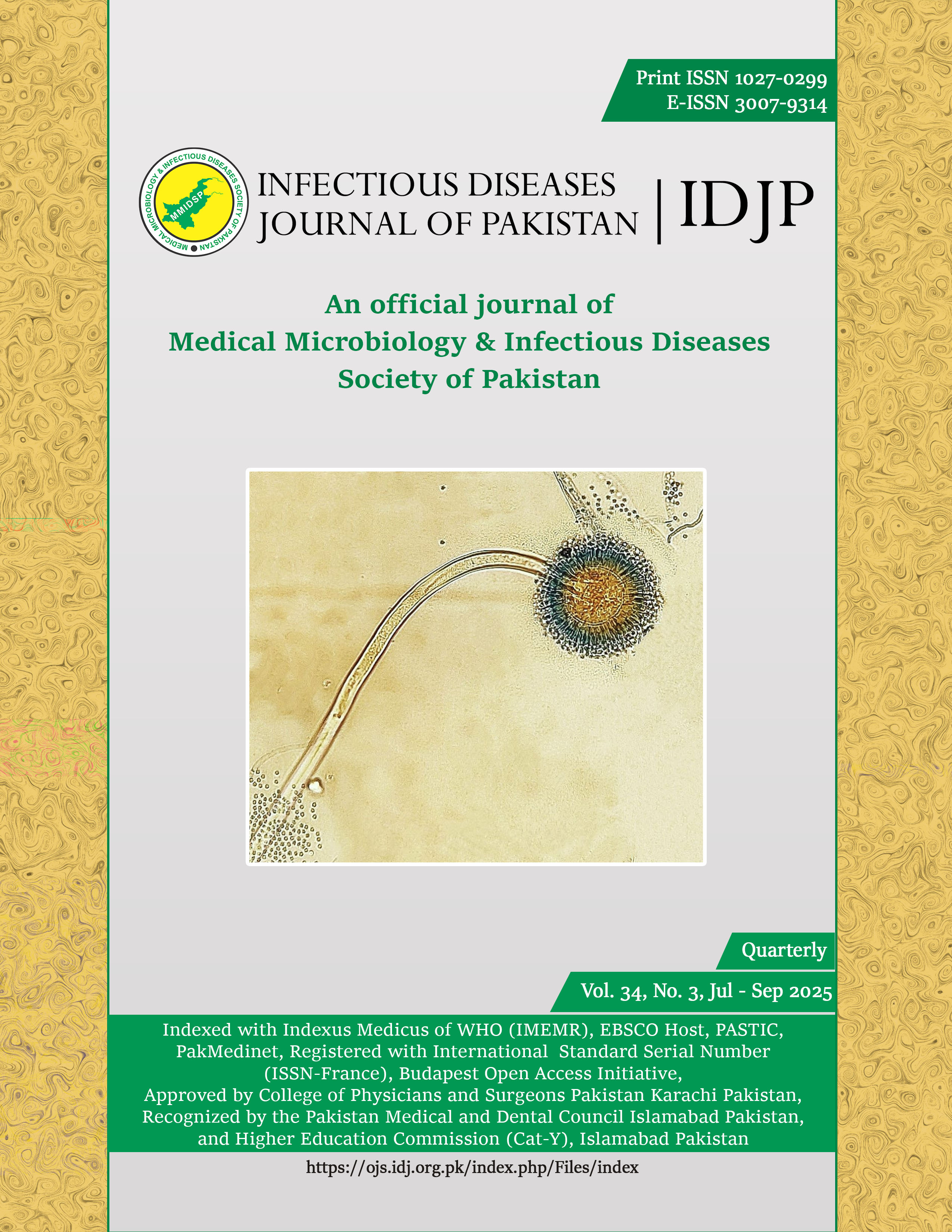Telepathology in microbiology: Bridging diagnostic gaps in LMICs
DOI:
https://doi.org/10.61529/idjp.v34i3.465Abstract
Accessibility of timely and accurate microbiology services is a major challenge for the efficient control of infectious diseases in low- and middle-income nations (LMICs). Very often, a shortage of qualified microbiologists, unsuitable infrastructure, and a lack of resources lead to undue delays in diagnosis. Telepathology, involving the transmission and interpretation of pathology images and data from a distant location, offers a plausible solution for filling such a gap, allowing for referral for expert opinion in areas where such specialized input is not available.
Modern-day examples demonstrate its potential. For instance, in Syria, an initial program successfully identified bacterial taxa as well as antimicrobial resistance profiles from 74 urine isolates and provided services for more than four million people who did not have access to sophisticated microbiological facilities. A mere small investment in internet connections and digital infrastructure brought marked benefits, extending the reach of diagnostics in places where it was needed the most.1
Advantages of telepathology extend beyond diagnosis. Throughout sub-Saharan Africa, distant training and mentoring initiatives have helped upskill laboratory staff, broker case consultation, and strengthen quality assurance processes.2 Such initiatives strengthen local confidence while fostering collaboration, linking LMIC laboratories with international experts as well as scarce local specialists, and supporting research on antimicrobial resistance and emerging pathogens.3
Though challenges remain in the sector. Higher expenses related to equipment, unreliable internet connections, and the need for lasting institutional commitment remain impediments to growth. Absence of standardized procedures, regulation requirements, and express policies in data security complicates implementation challenges, especially where data crosses institutional or country borders. It is critical to address these shortcomings as a way of ensuring patient confidentiality, guarding quality standards, and ensuring sustainable growth.
However, promising solutions are available. Economical methods, such as image sharing via smartphone, have proved their feasibility for real-time consultations. Cloud platforms are increasingly economical, providing rapid diagnostic functions that reduce the frequency of inappropriate treatments, maximize antibiotic stewardship, and reduce overall costs of care.2 Moreover, research holds that rapid expert feedback generates earlier focused treatments and shorter hospital admission duration—straight benefits to patients tipping the scales in favor of expanded use.
Looking ahead, the integration of artificial intelligence in telepathology also has promising transformative possibilities. Automation of Gram stain interpretation, colony identification, and susceptibility testing may assist staff without specialized experience and provide rapid turnaround in resource-poor settings. It will be necessary to train these algorithms in country-specific low- and middle-income country data to broaden their usability and accuracy.
The usefulness of telepathology is perhaps even more pronounced in subspecialties such as mycology and parasitology, where trained experts are scarce not only in LMICs but even globally. Accurate identification of fungi and parasites often requires specialized morphological expertise that is concentrated in a few reference laboratories. Remote image sharing and consultation can therefore be lifesaving, enabling timely recognition of invasive fungal infections or parasitic diseases that might otherwise be overlooked or misdiagnosed.
In conclusion, telepathology is no longer an experimental tool—it is a practical strategy with real-world application. It is capable of bridging expertise and access gaps, optimizing diagnostics, guiding stewardship, and achieving superior patient benefits for those previously left behind. To realize its full promise, LMICs must continue investing in sustainable models, supportive policies, and collaborative innovation that ensures telepathology becomes an integral part of routine infectious disease management.
References
Karah N, Antypas K, Al-Toutanji A, Suveyd U, Rafei R, Haraoui LP, Elamin W, et al. Teleclinical microbiology: An innovative approach to providing web-enabled diagnostic laboratory services in Syria. Am J Clin Pathol. 2022; 157(4): 554-60. DOI: https://doi.org/10.1093/ajcp/aqab160 .
El Jiar M, Eliahiai I, Chaib S, Elmorabit K, Mouatakid M, Kharmoum J, et al. The state of telepathology in Africa in the age of digital pathology advancements: a bibliometric analysis and literature review. Cureus. 2024; 16(7): e63835. DOI: https://doi.org/10.7759/cureus.63835
Razzano D, Puranam K, Tomoka T, Fedoriw Y. The role of telepathology in improving cancer diagnostic and research capacity in sub-Saharan Africa. Front Med. 2022: 978245. DOI: https://doi.org/10.3389/fmed.2022.978245
Downloads
Published
How to Cite
Issue
Section
License
Copyright (c) 2025 Summiya Nizamuddin

This work is licensed under a Creative Commons Attribution-NonCommercial 4.0 International License.



